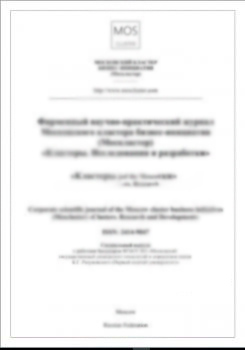The relevance of the study is determined by the need to take into account the risks of editing the human genome (somatic, embryonic and inherited editing of the human genome), the possibilities of introducing human genome editing into clinical practice. Editing of the human genome (somatic, germinal and inherited editing of the human genome) has significant potential for humanity and health systems, medicine and science. At the same time, editing of the human genome requires studying the risks and advantages of such editing for the formation of legal regulation.
genetic risks, somatic editing, human germ line editing, genome, genetic editing
1. Barrangou R. & Doudna J. A., Applications of Crispr Technologies in Research and Beyond // Nature & biotechnology. 2016. 34. P. 933-937.
2. Savić N. & Schwank G., Advances in Therapeutic Crispr/Cas-9 Genome Editing // Translational res. 2016. 168. P. 15.
3. Callaway E., Embryo-Editing Research Gathers Momentum // Nature 2016. 532 P. 289-290.
4. A Safety and Efficacy Study Evaluating CTX001 in Subjects with Transfusion-Dependent-β-Thalassemia,clinicaltrials.gov,URL:https://clinicaltrials.gov/ct2/show/NCT03655678 [https://perma.cc/XRP4-EPRC].
5. Archer N. M., Petersen N. et alt. Resistance to plasmodium falciparum in sickle cell trait erythrocytes is driven by oxygen-dependent growth inhibition. Proc. Natl. Acad. Sci. U.S.A. 2018. 115, 7350-7355.
6. Wilholt T. Die Freiheit Der Forschung: Begründungen Und Begrenzungen. Berlin: Suhrkamp. 2012
7. Biesecker L. G., and Spinner, N. B. A genomic view of mosaicism and human disease. Nat. Rev. Genet. 2013. 14, 307-320.
8. Subbaraman N. Limit on lab-grown human embryos dropped by stem-cell body. Nature. 2021;594:18-19.





